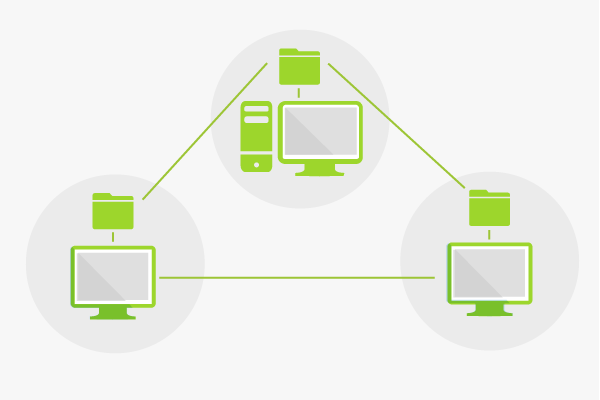Torrent
The term “Torrent” is short for BitTorrent. It is a web protocol which is mainly used for file sharing, the rapid exchange of large amounts of data over the web. The special feature of Torrent technology is that each data transfer runs over a single network of distributors and not via a central network.
History
In 2001, programmer Bram Cohen developed the BitTorrent protocol and presented it in July of that same year. Originally, the technology had been conceived for his own online community. However, the innovative technology of data exchange, even with slow Internet connections and low server utilization, quickly gained acceptance in the booming Internet. The principle of giving and taking and the free data exchange on the world-wide web were the main focus.
Within a few years, a whole community of file-sharers arose who exchanged data such as music, video or PC games in large quantities. BitTorrent Inc., founded by Bram Cohen, was one of the largest file-sharing networks in the world. However, as a result of the growing criticism of peer-to-peer networks in which copyrighted material was shared free of charge, the company switched its business to a paid model.
The actual Torrent technology is still used worldwide to exchange large amounts of data. Numerous services and software still use the protocol.
Technology
Large files can be downloaded quickly using Torrent even if you have a slow internet connection. This may well have been the reason for the inventor of BitTorrent, Bram Cohen, to develop this technique.
BitTorrent technology is based on the TCP/IP protocol and works like a P2P Network. In contrast to conventional download methods for which only the download capacity of the data source is utilized, BitTorrent also uses the download bandwidth of “seeders.” That way, torrent files can be downloaded quickly because they are being provided by multiple users of the network.
How it works
If you want to use Torrent technology for downloads, you first have to save a torrent file (.tor or .torrent) on your computer, which was previously created with a torrent client. The IP address or host name of the tracker is stored in this data record which consists of only a few kilobytes. Moreover, the file provides notes on the size and name of the content. The torrent file also contains a list of corresponding checksums of the individual files since the content of the data is downloaded “in pieces” to be reassembled at the destination.
A generated torrent file is linked to the corresponding record on their computer by whoever created it first. Example: A seeder provides a music title as a torrent file. This record contains the title, file size etc. At the same time, this record links to the music title on their hard disk. Others can find the created torrent with special programs, called “trackers.” IDs of the torrent and the IP addresses of the peers, which can offer the same file are stored there. Many such websites have become established as trackers on the web. A well-known service is “The Pirate Bay.”
If the desired torrent is available, a user can download the data using an appropriate Client. The client checks by on a list which it receives from the tracker, how many other peers also want to download the relevant file, and how many peers offer this file. Then the download of individual “chunks,” i.e. the individual segments begins. At this moment, the peculiarity of the Torrent system comes into effect, because any peer that downloads will immediately release their downloaded file for others who want it. Anyone only offering files and not downloading anything, is called a “Seeder.” Its counterpart is a “Leecher.” They only download and don’t share any data.
Another peculiarity of the Torrent system is that only the file which refers to the requested Torrent is exchanged in the network of peers. A separate network is thus formed for each torrent. Links to other files do not exist.
Benefits
The basic idea of the Torrent technology is the sharing of large files with other users over the Internet. Torrent technology is very suitable for this purpose. Data can be transferred even faster especially due to the increasing Internet speed. Because each Torrent has its own network, Torrent technology is often also a safe way to exchange data.
Criticism
Torrents are very often used for illegal copies of videos, music or computer games. Since these are copyright infringements, torrent services such as file sharing services are increasingly being targeted by authorities in the US and Europe. Large file sharers such as “The Pirate Bay” were even shut down. A long debate ensued thereupon, concerning whether the possession of a torrent file alone would be considered a violation of the copyright. To protect against copyright infringements, Google updated the Pirate Update in October 2014.

